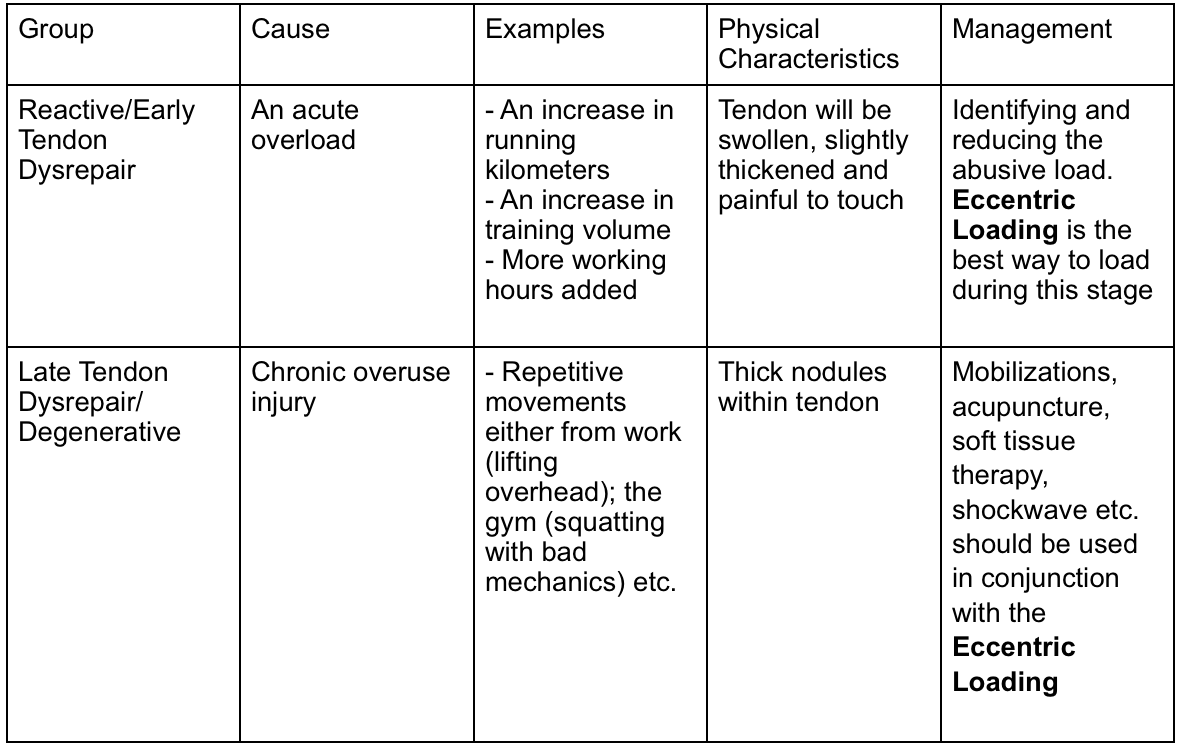Overuse injuries Part: 1
Welcome to Part 1 of a series I like to call: Why Is Something I Have Done All My Life Causing Me Pain?
Before we take a dive - maybe even a deep dive - into specific areas of the body these occur, first we need to understand what causes overuse injuries.
An overuse injury occurs when our tissue can no longer handle the repetitive forces that occur throughout our daily lives. These can happen from our job, our sport, our hobbies or other daily activities. We typically like to think that these injuries occur by dynamic movements, like squatting, overhead work, running etc. however, static posture can also put repetitive strain on our tissue. Long hours of sitting can affect our hips and lower back, looking down all day at a computer can affect our neck, shoulders and upper back. These static posture positions can create the same strain as dynamic movements.
We have all heard it before: your injury is a muscle strain.
Well GREAT! - but what does that even mean?
Muscle strain is the most frequently used term when describing a muscle injury. Even today, this term is used with high variability and there is no clear definition.
Typically, the diagnosis of a muscle strain is based on strength and function of the muscle, the amount of tissue damage, and percentage of fibres torn.
Before we go any further, let’s talk a little about the structure of a muscle. The simplest structure of a muscle is a muscle belly - which is the contractile portion of the muscle - and tendons - which are non-contractile and attach the muscle to bone.
Muscles come in all shapes and sizes as do tendons. However, no matter the architecture of the muscle, it is the tendon that receives the majority of the forces during contraction. This translates to the part that becomes the most injured.
Based on the newest evidence available a universal grading system has been established and divides muscle injuries into two groups: Structural Muscle Disorder (acute muscle damage) and Functional Muscle Disorder (repetitive muscle damage).
A Structural Muscle Disorder is the acute injury. An example is if you ever fell on your outstretched arm, which can lead to rotator cuff muscle damage. You will have pain immediately after the injury which may involve a ‘snap’ sensation. Pain is typically more sharp and stabbing.
In a Functional Muscle Disorder the injury is caused by repetitive strain on the muscle. An example would be poor squat form over time, eventually leading to injury. The pain will be influenced by activity - it will increase with continued activity or will occur hours after activity. Pain will be described as stiffness or aching.
Eventually, both Structural and Functional muscle disorders will end up with the same result: pain. One occurs from a specific traumatic event where the other will happen by repetitive damage.
When it comes to the pathology of tendon injuries no one has published more literature on the subject than Dr. Jill Cook. Dr. Cook is a physiotherapist, holds a PhD, and created Tendon Pathology Continuum.
By understanding her research, we can allow better placement of various treatment options when it comes to muscle injuries.
She divided the tendon injuries into 3 groups - however for treatment options it is best to define into two groups:
LOAD MANAGEMENT is always the key for treating tendon injuries. Dr. Cook believes that eccentric loading is the best way to load the tendon during this stage. Eccentric loading is the lengthening of muscles under load. For example, this would be the down portion of a deadlift. In contrast, concentric loading if the shortening of muscles under load, as per our example, this would be the up portion of the deadlift. By slowly loading these muscles eccentrically we are building up the tolerance of the muscle.
If I lost you by this point or you skimmed over the details - let’s sum everything up!
Based upon the extent of your injury your pain may present differently
Tendon injuries fall along a continuum of disorders
MOST IMPORTANT: treatment needs to be specific based upon where the injury lies on the continuum
So next time you are about to start that new program or activity, which may involve a heavy increase load, think to yourself, is my body ready to do this? Or should I progress into it, allowing my body to slowly adapt to the new load?
Stay tuned for Part 2!




